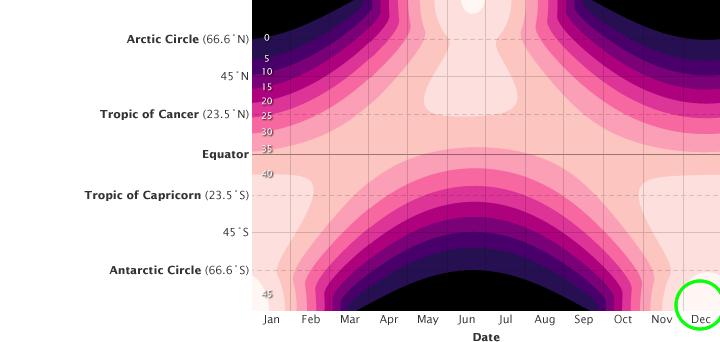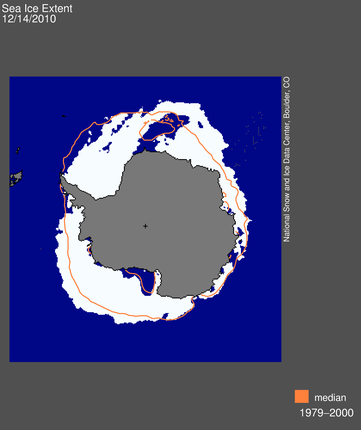Sunlight is at its peak for the year in Antarctica, as seen in the green circle below.
The Earth is also closest to the sun this time of year.
The Antarctic has a lot of excess ice, all of which exists at relatively low latitudes. Some of the excess ice is more than 30 degrees away from the pole, where the sun is high in the sky.
Putting all this information together, it becomes painfully clear that excess Antarctic ice has a large impact on the Earth’s radiative balance. Sunlight reflects back into space from the excess ice. Excess Antarctic ice has a substantial cooling effect on the planet.
By contrast, the Arctic receives essentially no solar insolation this time of year. And the Arctic minimum occurs in mid-September – when the Sun is about to set for the winter. Arctic ice loss in late summer is at high latitudes when the sun is low in the sky. It has very little impact on the Earth’s radiative balance.
It is long past time for climate scientists to stop propagating nonsense about “polar ice loss” as a positive feedback.




“It is long past time for climate scientists to stop propagating nonsense about “polar ice loss” as a positive feedback. ”
How could it not turn out to be a positive feed back? On what basis is it nonsense?
read the article.